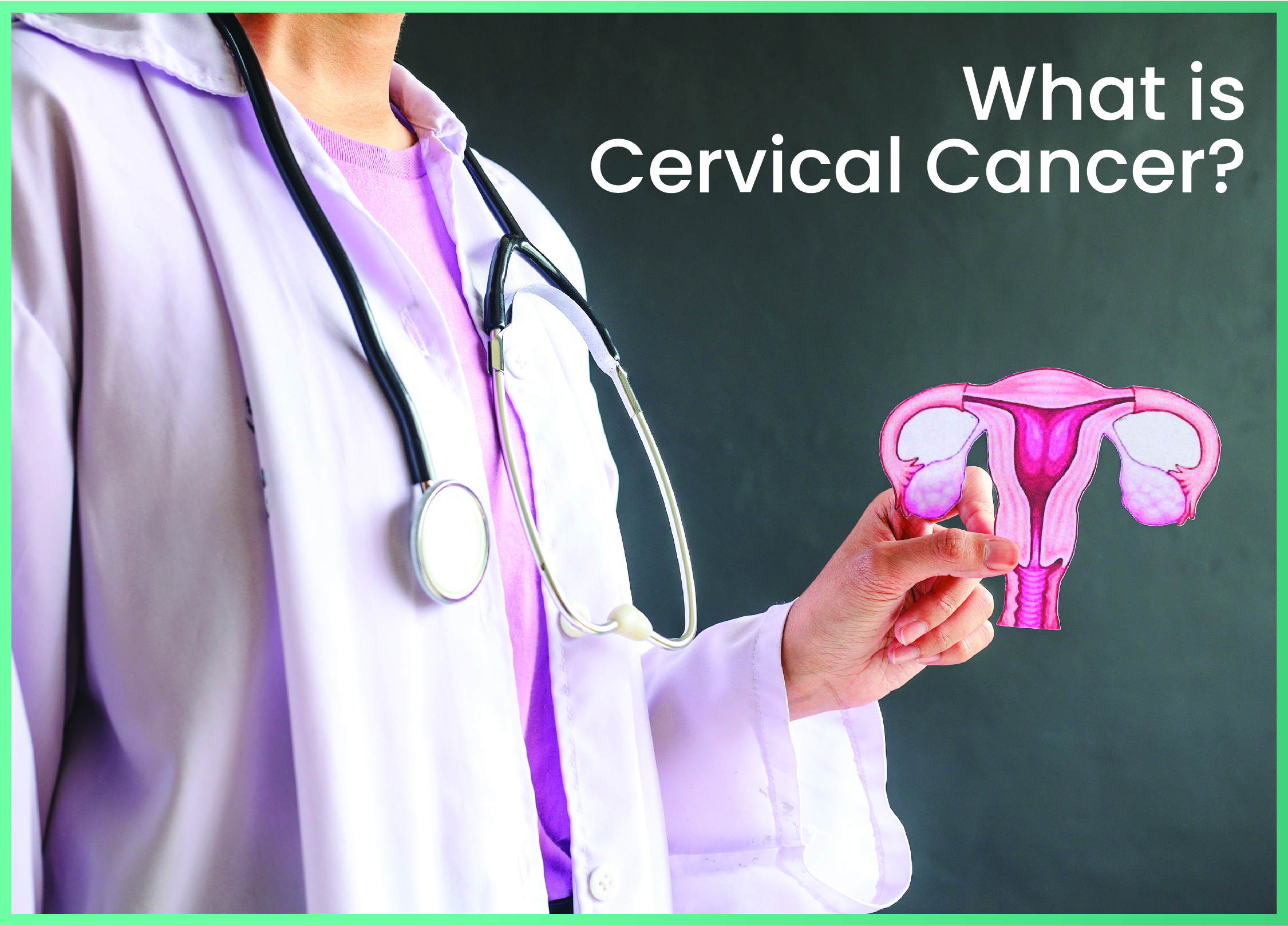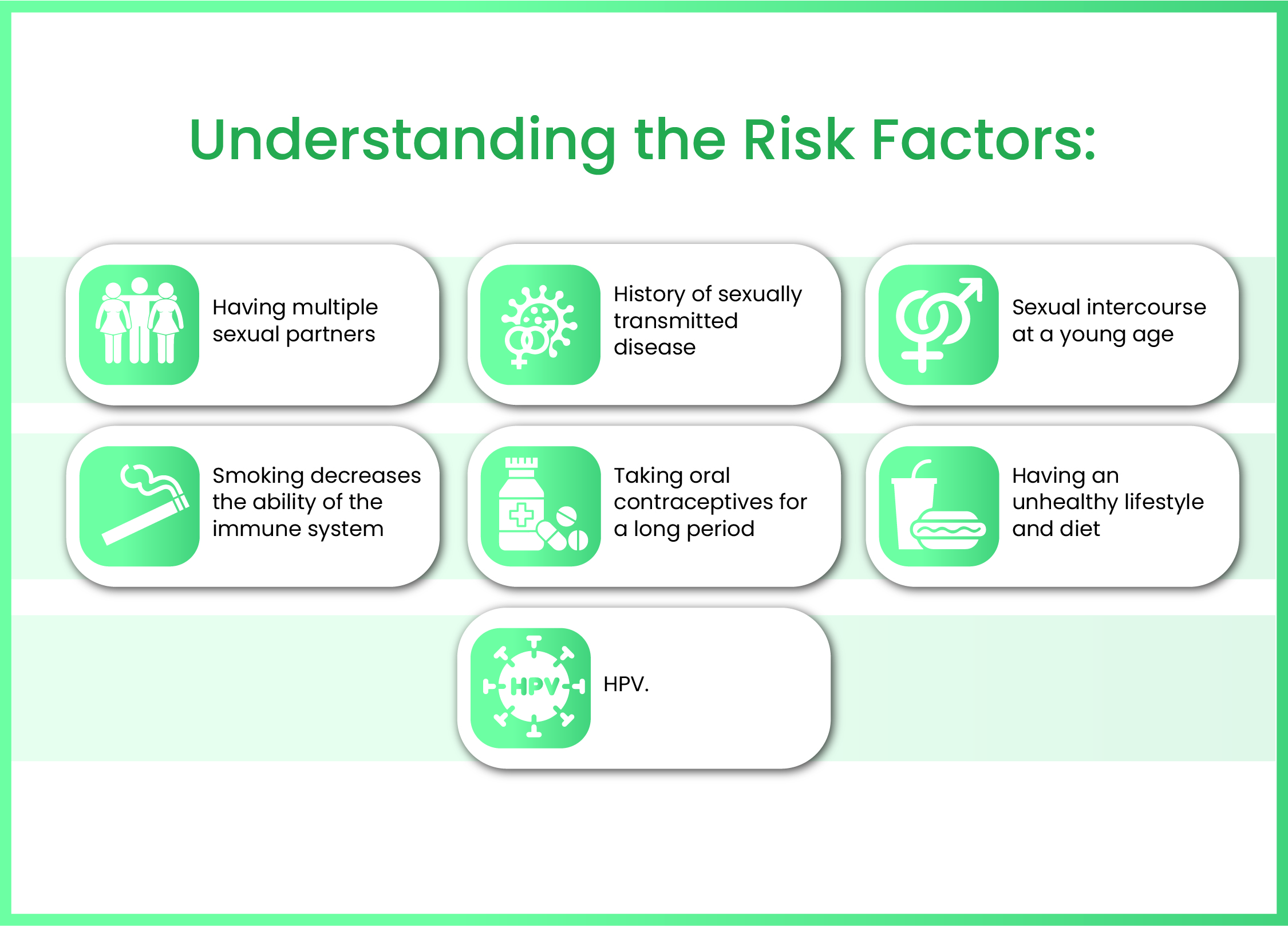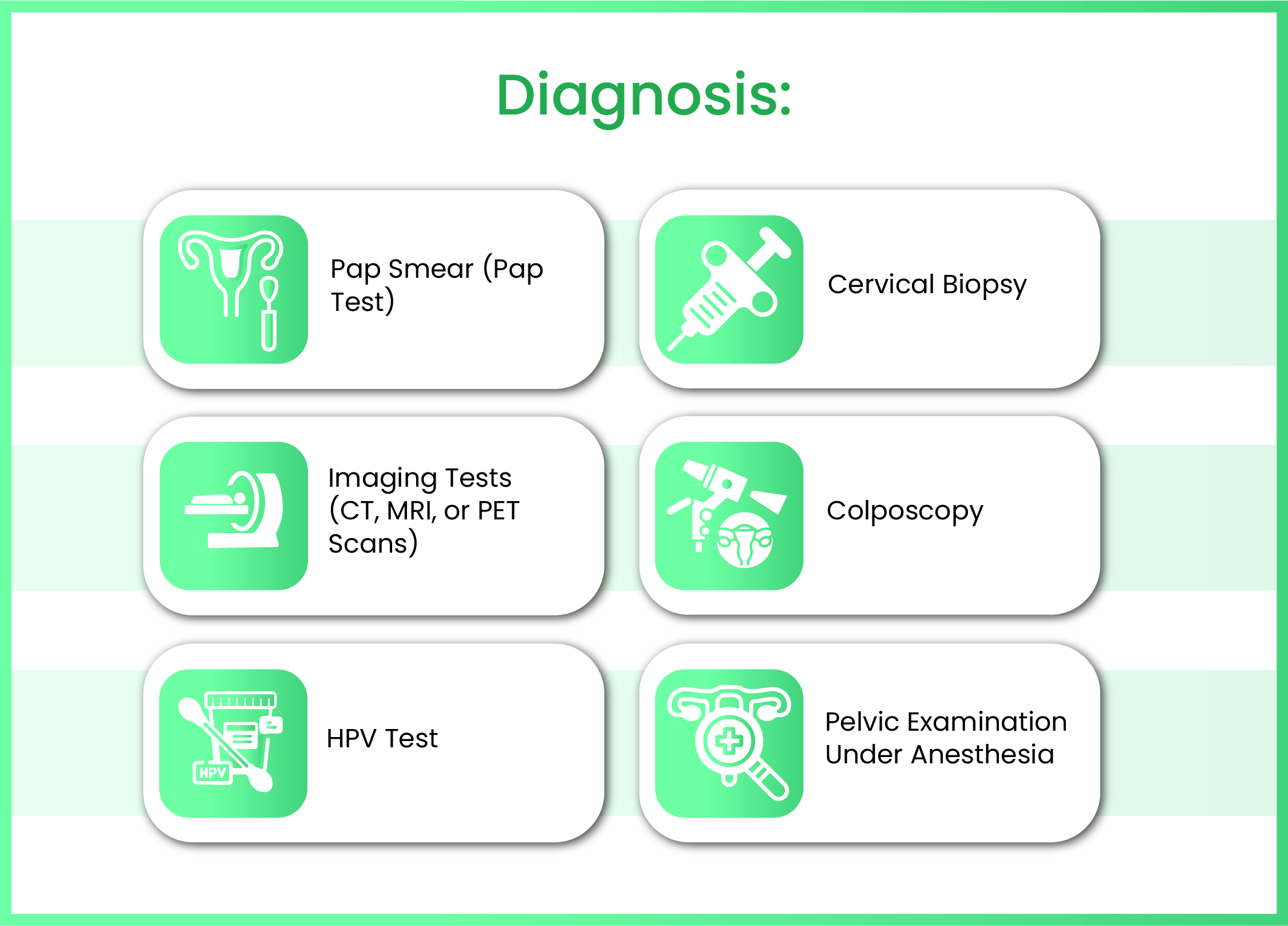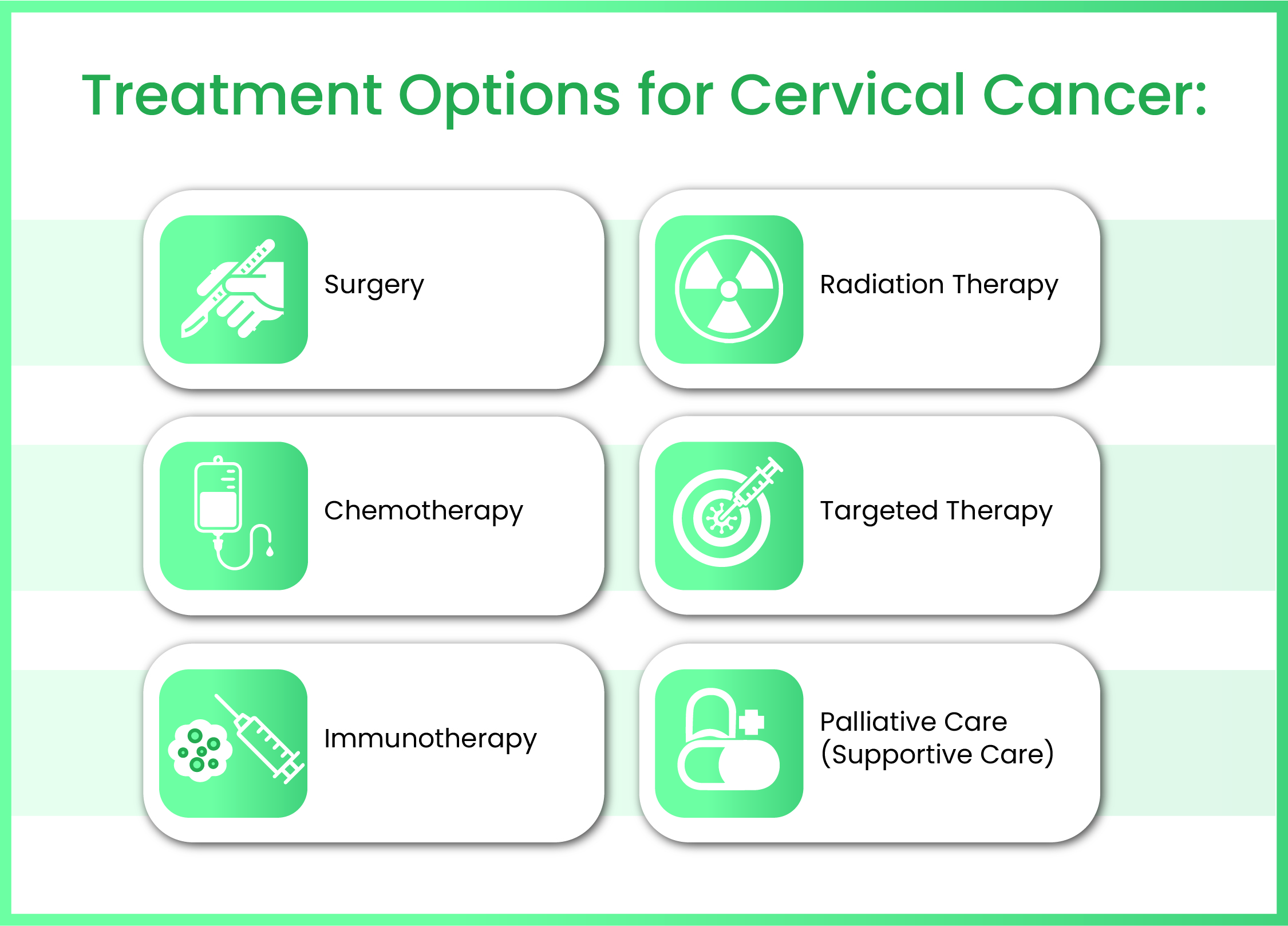
Cervical Cancer
What is Cervical Cancer?
Cervical cancer is a type of cancer that starts in the cervix – the lower part of the uterus that connects to the vagina. It usually develops slowly over time and often starts with abnormal changes in the cervical cells. These changes can be detected through routine screening tests and treated before they turn into cancer.
This cancer is mainly caused by long-term infection with human papillomavirus (HPV), a common virus that is spread through sexual contact. Although many women with HPV don’t develop cervical cancer, persistent HPV infection increases the risk.
Thanks to modern screening and vaccines, cervical cancer is now preventable and treatable if caught early. If you or a loved one is looking for expert guidance, Dr. Reetu Jain, cervical cancer specialist in Mumbai at Jaslok Hospital, offers advanced diagnosis and compassionate care for all stages of cervical cancer.
Types of Cervical Cancer
- Squamous Cell Carcinoma: Most common type (80–90% of cases). Originates in the flat, thin cells lining the cervix.
- Adenocarcinoma: Begins in the glandular cells that produce mucus in the cervical canal. Less common but slightly more aggressive.
- Adenosquamous Carcinoma or Mixed Carcinoma: Contains features of both squamous cell carcinoma and adenocarcinoma.
- Small Cell Cervical Cancer: Rare and aggressive type that needs immediate attention.
Each type requires a different approach. Dr. Reetu Jain, regarded as one of the best cervical cancer doctors in Mumbai, creates individualized treatment plans based on the type and stage of cancer.
Understanding the Risk Factors
The risk of developing cervical cancer is directly associated with the risk of contracting HPV.

- Having multiple sexual partners: Increases the risk of HPV exposure.
- History of sexually transmitted disease: Indicates higher susceptibility to HPV.
- Early sexual activity increases vulnerability to HPV: Younger individuals are at greater risk.
- Smoking weakens the immune system and raises risk: Compromises the body’s ability to fight HPV.
- Long-term use of oral contraceptives: Associated with increased cervical cancer risk.
- Unhealthy lifestyle and poor diet: Weakens the immune system and may contribute to risk.
More than 9 out of every 10 cases of cervical cancer are caused by HPV infection. Prevention through awareness, vaccination, and regular screenings is key.
Signs and Symptoms of Cervical Cancer
Because cervical cancer develops gradually, symptoms may not appear until the disease has progressed. Common signs include:

- Unusual vaginal bleeding
- Watery, bloody vaginal discharge
- Pelvic pain or pain during intercourse
- Heavier or longer menstrual periods
- Fatigue, weight loss, or swelling in the legs
If you or someone you know experiences these symptoms, consult a specialist without delay.
Dr. Reetu Jain, a leading cervical cancer specialist in Mumbai, can guide you through the next steps with compassion and expertise.
How is Cervical Cancer Diagnosed?
Diagnosing cervical cancer usually starts with regular health checkups or when a woman visits her doctor with unusual symptoms like bleeding between periods, pelvic pain, or bleeding after intercourse. Early detection is very important because cervical cancer, when found early, is highly treatable. Below are the major steps in diagnosis:

- Pap Smear (Pap Test): This is the most common and simple test used to detect early changes in the cervix. During a Pap test, the doctor gently collects a few cells from the cervix using a soft brush or spatula. These cells are then checked under a microscope to look for any abnormal or precancerous changes. It is a quick and painless procedure done in a clinic, usually during a routine gynecological exam.
- HPV Test: This test checks for the presence of high-risk types of Human Papillomavirus (HPV), which is the main cause of cervical cancer. It is often done at the same time as a Pap test, especially for women above 30. If the HPV test is positive, the doctor may suggest more tests to look at the cervix more closely.
- Colposcopy: If the Pap smear or HPV test shows anything unusual, the next step is usually a colposcopy. This is a special examination where the doctor uses a device called a colposcope to get a magnified view of the cervix. It helps the doctor see any abnormal areas more clearly. It is a safe and painless procedure, similar to a Pap test, but more detailed.
- Cervical Biopsy: If any suspicious areas are seen during the colposcopy, the doctor may take a small piece of tissue from the cervix. This is called a biopsy. The tissue sample is then sent to a laboratory where a pathologist checks if the cells are cancerous or not.
- Imaging Tests (CT, MRI, PET): If the biopsy confirms cancer, doctors will want to know how far it has spread. This process is called staging. Imaging tests like MRI, CT scan, or PET scan help doctors see if the cancer has spread to nearby tissues, lymph nodes, or other organs. These tests are painless and are done in a scanning machine. The results guide doctors in choosing the right treatment.
- Pelvic Examination Under Anesthesia: Sometimes, to check the size of the tumor and whether it has spread to nearby organs like the bladder or rectum, doctors perform a detailed pelvic exam while the patient is under anesthesia. This gives a clearer view and helps plan surgery or other treatments.
Diagnosing cervical cancer requires a thoughtful, step-by-step process. Early action guided by experts like Dr. Reetu Jain at Jaslok Hospital ensures the best possible outcomes.
Treatment Options for Cervical Cancer

1. Surgery
Surgery is often the first step when cervical cancer is found early and hasn’t spread much:
- For very early-stage cancer, doctors may remove just a small part of the cervix using procedures like cone biopsy.These treatments can sometimes help women keep their fertility.
- Trachelectomy is a type of surgery where the cervix is removed but the uterus is kept intact. This is helpful for young women who wish to have children in the future.
- If the cancer is larger or at a slightly advanced stage, a hysterectomy (removal of the uterus and cervix) is done.
2. Radiation Therapy
Radiation therapy uses high-energy rays (like X-rays) to kill cancer cells. It can be used:
- After surgery to destroy any remaining cancer cells.
- Instead of surgery, especially if the cancer has spread or surgery isn’t possible.
- Along with chemotherapy to make the treatment more effective.
There are two main types:
- External Radiation Therapy: A machine directs radiation at the pelvis from outside the body. It is usually given 5 days a week for several weeks.
- Internal Radiation Therapy (Brachytherapy): A device is placed inside the vagina to give high doses of radiation directly to the tumor.
Side Effects: Side effects may include tiredness, skin changes, diarrhea, or bladder irritation, but these often improve after treatment ends.
3. Chemotherapy
Chemotherapy (or “chemo”) uses powerful medicines to kill cancer cells or stop them from growing. It is usually given:
- Along with radiation in more advanced stages of cervical cancer.
- On its own, if the cancer has spread to other parts of the body.
4. Targeted Therapy
This is a newer treatment that focuses on specific genes or proteins found in cancer cells. These medicines attack cancer cells while sparing healthy ones.
5. Immunotherapy
Immunotherapy helps the body’s immune system recognize and destroy cancer cells. It is usually used for advanced cervical cancer that doesn’t respond to other treatments.
6. Palliative Care (Supportive Care)
In cases where a cure is not possible, palliative care is provided to relieve pain, manage symptoms, and improve quality of life. This includes medications for pain, emotional support, and guidance for families.
Expert Care at Jaslok Hospital
Dr. Reetu Jain is a highly respected and experienced cervical cancer specialist in Mumbai, known for her compassionate approach and excellence in women’s cancer care. Practicing at the renowned Jaslok Hospital, Dr. Jain has successfully treated numerous patients with cervical cancer across various stages using advanced techniques in surgery, radiation, chemotherapy, and targeted therapies.
With a strong focus on early diagnosis, personalized treatment, and long-term wellness, she ensures that every woman receives the highest standard of care. If you are looking for expert guidance and support, Dr. Reetu Jain is widely regarded as one of the best doctors for cervical cancer in Mumbai, offering both medical expertise and emotional reassurance throughout the treatment journey.
Frequently Asked Questions (FAQs)
Yes. If detected early, cervical cancer is highly treatable and often curable.
It may cause discomfort or pain in advanced stages, especially in the pelvic area or during intercourse.
- Women aged 21-29: Every 3 years
- Women aged 30-65: Every 3-5 years (Pap + HPV test)
Most cervical cancers are caused by HPV, but not all HPV infections lead to cancer.
Some treatments may affect fertility. Fertility-sparing options are available in early stages.
Ideally, boys and girls aged 9–14, before sexual activity begins. It’s also effective up to age 26 and sometimes recommended up to age 45.
The chances depend on the stage, type, and treatment. Regular follow-ups reduce the risk of recurrence.


